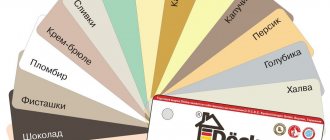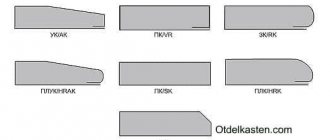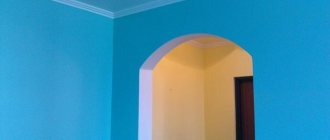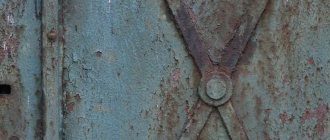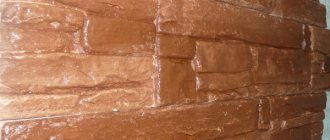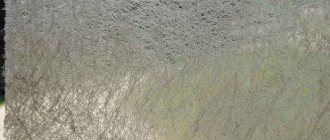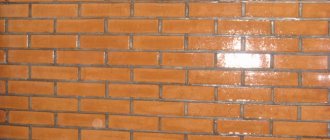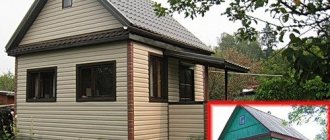The Russian vehicle fleet is rapidly expanding with both new and used cars. In conditions when many global automakers decided to curtail their production at domestic enterprises, the cost of imported goods turned out to be too prohibitive for a significant number of those wishing to become the owner of a passenger vehicle. Therefore, many of them turn their attention to the secondary market, which, needless to say, is fraught with many pitfalls, most often hidden from view by the skillful actions of dealers. Carrying out an auto examination helps determine the degree of damage caused to the car as a result of an accident or due to external factors due to the presence of production or operational damage and defects. An integral part of this event can be called an examination of the paintwork. And although it is carried out quite rarely, with its help you can find out a lot of details about the history of the car you are purchasing. And in some cases, studying the paintwork is simply necessary.
Checking the paintwork on a car.
The study of paintwork, both visual and carried out using modern measuring equipment, is a separate type of technical diagnostics of cars. Checking the paintwork of a car allows you to assess the condition of the car, and identifying specific deficiencies and deviations from the nominal values helps determine the causes of such defects. Instrumental examination of the paint layer allows us to determine the following quantitative characteristics:
- coating thickness;
- hardness of paint and varnish material;
- level of adhesion of the coating of body parts.
In particular, the hardness value of the paintwork is a physical and mechanical parameter that characterizes the degree of resistance of the paintwork coating to external mechanical influence (impact or deformation). This indicator is measured using a pendulum device or the conventional scratching method. The thickness of the paint layer is measured by a prior, appropriately called a thickness gauge. Moreover, each make and model of car has its own characteristics of the thickness of the factory coating.
Adhesion refers to the ability of a material to interact with other materials - the higher the adhesion, the better the bonding characteristics. Paintwork adhesion is the most important parameter, one of the most important parameters that determine the anti-corrosion properties of the coating. The degree of adhesion is measured by the force required to lift the coating from a unit area of the treated body surface. Paint adhesion analysis is carried out using various methods and equipment in laboratory conditions. The most common methods for measuring the adhesion of materials include:
- A lattice cut used for surfaces less than or equal to 250 microns in thickness. This method is regulated by the ISO standard
- The tear-off method, as the name suggests, is applicable on flat surfaces. It is produced by gluing a metal plate onto the surface under study, followed by tearing it off, the force of which is measured with a special device. The method is described in the ISO standard
Damage, defects and other deficiencies revealed by paintwork examination
Carrying out multi-component diagnostics of automotive paintwork allows you to identify many problem areas, including hidden damage to body elements. Here is an approximate list of paintwork defects identified during its examination:
- different shades of the surface of the car, that is, heterogeneity of color in different parts of the vehicle body;
- corrosive inclusions (cosmetic);
- defects such as risks, rashes, streaks on the surface of the coating;
- “cobwebs” or small, barely noticeable cracks in the surface layer of paint;
- drips;
- unpainted areas of the body surface.
Poor-quality paintwork, characterized by low adhesion and hardness, can suffer the following defects and damage under the influence of external factors:
- Paint chips cause the accumulation and retention of moisture, as well as active chemicals. As a rule, chips are most often the initial source of corrosion processes.
- Blisters, which are deformation of several or the top layer of paint at once. They usually appear locally in places where there was mechanical damage to the car body elements before painting. The causes of swelling can be rotting of the metal surface of the body, exposure to reagents included in auto chemicals or coming from the atmosphere (usually such problems arise at the location of industrial enterprises), the presence of rust, as well as frankly poor quality of paint work. The swelling eventually develops into peeling of the coating.
- Scratches.
Causes of car paintwork defects
An important role is played by the quality of the paint and varnishes themselves, which affects the susceptibility of the coating to withstand external factors. Keeping a car outdoors is also a significant risk factor - precipitation in the form of snow, hail, rain, significant temperature changes, and mechanical damage inevitably lead to a significant deterioration in the appearance of the vehicle. Even the “correct” driver, who has never been in an accident and zealously monitors the condition of his car, is powerless against natural anomalies. Therefore, the quality of paintwork, which must be at an appropriately high level, is of great importance. Simple but effective recommendations will help prevent damage to the paint layer: timely maintenance of the car, carrying out technical inspections within the scheduled time limits, and avoiding frequent polishing. A car warranty also includes a warranty on the paintwork, but often the occurrence of damage is due to reasons that are considered in the warranty agreement as occurring through the fault of the car owner, and therefore you will be politely refused to repaint.
A complete analysis of paint and varnish coatings is carried out in stages. First of all, a visual inspection of the car is carried out, during which all damage visible to the naked eye is recorded. The next stage is instrumental research to determine the presence of factory painting defects. By examining the paintwork, you can determine whether the car has been in an accident, whether it has been repainted, and which body parts have been replaced. Moreover, in some cases it is possible to find out how long ago the repair or repainting was carried out. The owner of the car, who handed it over for painting, can, through an independent examination of the paintwork, determine the quality of the materials used and the work itself and submit corresponding claims to the workshop.
Thickness gauge calibration
Thickness gauge calibration is the process of establishing equality between the device’s performance and the actual coating thickness, taking into account the permissible error. It is carried out before the first measurement and then at least once every 3-4 months. It is important to know that the settings may be lost more often if the device is rarely used or stored in an unheated room in winter or, conversely, at high ambient temperatures (above +28°C).
To calibrate the device, two plates are used: one is plastic, playing the role of paintwork, the second is a zero sample made of metal suitable for measurements for each specific thickness gauge.
The process looks like this:
- turn on the device;
- lay the metal plate horizontally;
- press the button intended for calibration;
- install the device on the plate, firmly, but without force, pressing the sensor to the sample;
- reset the received readings;
- place a plastic sample on a metal plate;
- take a measurement;
- Compare the obtained result with the reference value indicated on the plastic sample.
If you receive erroneous data, perform the calibration again. If the result is incorrect data or the error exceeds the standard established by the manufacturer, you should contact a store or service center for help.
How to examine the thickness of paintwork
A qualitative analysis of the paint layer of a car, carried out using specialized equipment, guarantees the discovery of most problem areas and defects in body parts hidden under a layer of paint. One of the main components of paintwork inspection is measuring the thickness of the paint layer. This technological parameter makes it possible to determine with a high degree of accuracy the uniformity of distribution of the film of paint and varnish material over the surface of body parts. Such measurements do not require laboratory conditions, since the industry has mastered the production of a compact, self-contained device called a thickness gauge.
Important characteristics when examining and diagnosing a car’s paintwork are the adhesion of the paintwork material and its hardness.
The results of a comprehensive examination of paintwork (a set of technological, anti-corrosion, physical and mechanical properties of the coating) must, with a certain degree of error, comply with the technical regulations established for each type of primer composition, varnish and enamels. Automakers also try to indicate details and basic technical characteristics of the factory paints and varnishes used, as well as information about the technology of their application. If we take the average characteristics, the thickness of the protective and decorative film is about 120 microns, with the minimum acceptable parameter being 70 microns.
Is the car damaged? Checking the thickness of the paintwork with a thickness gauge
How to check whether the paint is “factory” or not?
The original (“factory”) paint layer is on average 100–200 microns. If this figure is several hundred microns, then painting is not a conveyor belt. If more than 1000 microns are displayed on the screen, there is putty under the paint layer.
How to measure paintwork with a thickness gauge?
• At least five control points on each body element.
• Apply the thickness gauge strictly perpendicular to the body. Otherwise it will show incorrect numbers. Check each element at least five points - along the edges and in the center. The transition point between the original paintwork and the repair area is usually a stamping or molding: where the body has a relief.
• Check not only the hinged panels, but also the body frame.
• It is imperative to measure the thickness of the body frame paintwork. Open the doors, hood, trunk. The thickness gauge readings there should be less than on the external parts. With “factory” coloring they are 40–60 microns.
What if the car has an aluminum body?
Not every thickness gauge can measure cars with aluminum body parts. To measure the paintwork of such parts, you need a special device that can work on aluminum. Switching between ferrous and non-ferrous metals usually occurs automatically. The thickness gauge does not measure plastic parts.
Which thickness gauge should I choose?
It’s better to rent a good one (see advertisements for renting thickness gauges on baza.drom.ru).
If you decide to buy an inexpensive thickness gauge for one or two thousand rubles from China, it is better to change your mind. He can deceive you for your own money by inflating or understating your readings. It is safer to rent a professional device to inspect the car. This will cost you about 1000 rubles per day.
Measurements in winter
Not every thickness gauge is capable of operating at temperatures below 0°C. In winter, landlords usually rent out only frost-resistant models, but it wouldn’t hurt to additionally mention this when ordering the device.
Calibration
Before starting measurements, the thickness gauge must be calibrated. For this purpose, special calibration plates are used, which are included in the kit. But the calibration gets lost due to temperature changes, dampness or a dead “battery”. Therefore, always check the calibration of the device before taking measurements. If you rent a thickness gauge, ask that it be calibrated in front of you, and also be given calibration plates for subsequent self-adjustment. Just in case, check how to do this.
Do not use a thickness gauge on a dirty car.
Do not use the thickness gauge on a dirty machine. Firstly, the device readings may be incorrect. Secondly, using a thickness gauge on a dirty body can damage both the device itself and the paintwork.
Conclusion
1. Don't use no-name or cheap thickness gauges.
2. Check in advance the acceptable paint thickness for a specific model. For attached parts this is usually 100–200 microns, for the body frame - 40–60 microns.
3. Select a device based on the inspection conditions: winter - you need a frost-resistant thickness gauge, the machine has aluminum parts - a device that works with non-ferrous metals.
4. Operate a calibrated instrument on a clean machine.
5. Measure the element at at least five different points perpendicular to the body.
6. Measure not only the hinged panels, but also the internal parts of the body.
Advertisements for the sale of thickness gauges
Thickness gauge rental advertisements
Table of paint thickness depending on the make and model of the car
Each specific vehicle model has its own technology for applying a layer of primer, paint and varnish. Therefore, the spread of paintwork thickness values can vary widely, from 70 to 150 microns. For those car enthusiasts who are planning to purchase a used car, we present the thickness of the factory coating for the most common brands and models of passenger cars, which will allow you to determine what the thickness of the paint coating on the purchased car should be:
| Brand | Model | Paint layer thickness (µm) |
| Audi | Audi A5/A6 | 100 or less |
| Audi A7 | 155 – 170 | |
| Audi A8 | 100 – 120 | |
| Audi Q3/Q5 | 135 – 140 | |
| Audi Q7 | 115 – 145 | |
| BMW | BMW X1 | 110 |
| BMW X3/M6 | 90 – 100 | |
| BMW X5/X6 | 120 – 165 | |
| BMW E60 | 130 – 165 | |
| BYD | BYD F3 | 100 or less |
| Citroen | Citroen C3 | 90 – 120 |
| Citroen C4 | 75 – 125 | |
| Citroen C4 (2011) | 90 – 135 | |
| Citroen C5 | 110 – 130 | |
| Citroen C-Crosser 90 – 120 | 55 – 90 | |
| Cherie | Cherie Amulet | 110 – 120 |
| Cherie Tiggo | 100 – 110 | |
| Chevrolet | Chevrolet Aveo | 70 – 80 |
| Chevrolet Captiva | 85 – 95 | |
| Chevrolet Cruze | 120 – 130 | |
| Chevrolet Epica | 95 – 105 | |
| Chevrolet Lacetti | 110 – 140 | |
| Chevrolet Lanos | 85 – 150 | |
| Chevrolet Niva | 90 – 100 | |
| Chevrolet Spark | 90 – 100 | |
| Daewoo | Daewoo Nexia | 95 – 115 |
| Daewoo Matiz | 100 – 120 | |
| Fiat | Fiat Albea | 115 – 130 |
| Fiat Punto | 110 – 120 | |
| Ford | Ford Explorer | 140 – 150 |
| Ford Focus | 155 – 160 | |
| Ford Kuga | 130 – 140 | |
| Ford Mondeo | 120 – 130 | |
| Gili | Geely Albea | 80 – 100 |
| Geely MK | 80 – 100 | |
| Gili Otaka | 75 – 80 | |
| Geely Punto | 75 – 80 | |
| Honda | Honda Accord | 90 – 100 |
| Honda Accord 7 | 130 – 145 | |
| Honda Civic | 100 – 110 | |
| Honda CR-V | 80 – 90 | |
| Honda Fit | 90 – 100 | |
| Hyundai | Hyundai Accent | 70 – 75 |
| Hyundai Elantra | 75 – 95 | |
| Hyundai IX | 70 – 80 | |
| Hyundai Santa Fe | 80 – 95 | |
| Hyundai Solaris | 95 – 105 | |
| Hyundai Sonata | 80 – 90 | |
| Hyundai I30 | 100 – 110 | |
| Hyundai I40 | 100 – 110 | |
| Infinity | Infiniti FX35 | 110 – 120 |
| Kia | Kia Cee'd | 100 – 110 |
| Kia Cerato | 110 – 120 | |
| Kia Optima | 120 – 130 | |
| Kia Picanto | 110 – 120 | |
| Kia Rio | 100 – 110 | |
| Kia Sorento | 95 – 105 | |
| Kia Soul | 105 – 115 | |
| Kia Sportage | 110 – 120 | |
| Kia Venga | 120 – 130 | |
| Lada | Lada Kalina | 60 – 90 |
| Lada Priora | 70 – 100 | |
| Lada Granta | 90 – 100 | |
| Lexus | Lexus RX | 140 – 150 |
| Lexus CT | 130 – 140 | |
| Lexus GX | 120-130 | |
| Lexus ES | 135 – 145 | |
| Lexus LX | 140 – 150 | |
| Lexus LS | 145 – 155 | |
| Mazda | Mazda CX-5 | 90 – 100 |
| Mazda CX-7 | 85 – 120 | |
| Mazda 3 | 110 – 130 | |
| Mazda 6 | 110 – 120 | |
| Mercedes Benz | Mercedes-Benz C | 90 – 100 |
| Mercedes-Benz E | 90 – 100 | |
| Mercedes-Benz GL | 90 – 100 | |
| Mercedes-Benz ML | 90 – 100 | |
| Mitsubishi | Mitsubishi ASX | 70 – 80 |
| Mitsubishi Lancer | 90 – 125 | |
| Mitsubishi L200 | 55 – 70 | |
| Mitsubishi Outlander XL | 50 – 75 | |
| Mitsubishi Pajero | 100 – 110 | |
| Nissan | Nissan Almera | 140 – 150 |
| Nissan Juke | 120 – 130 | |
| Nissan Murano | 90 – 100 | |
| Nissan Navara | 105 – 115 | |
| Nissan Pathfinder | 100 – 110 | |
| Nissan Patrol | 75 – 85 | |
| Nissan Qashqai | 110 – 120 | |
| Nissan Tiida | 100 – 110 | |
| Nissan Teana | 125-135 | |
| Nissan X-Trail | 80 – 90 | |
| Peugeot | Peugeot 308 | 110 – 120 |
| Peugeot 508 | 100 – 110 | |
| Peugeot 3008 | 105 – 115 | |
| Peugeot 4008 | 60 – 70 | |
| Peugeot Occasions | 90 – 100 | |
| Opel | Opel Astra | 125 – 160 |
| Opel Astra GTC | 105 – 115 | |
| Opel Astra Turbo | 125 – 140 | |
| Opel Corsa | 115 – 125 | |
| Opel Zafira | 115 – 125 | |
| Renault | Renault Duster | 110 – 120 |
| Renault Fluence | 100 – 140 | |
| Renault Koleos | 90 – 100 | |
| Renault Logan | 70 – 120 | |
| Renault Megane | 120 – 130 | |
| Renault Sandero | 105 – 115 | |
| Skoda | Skoda Fabia | 105 – 115 |
| Skoda Octavia | 120 – 130 | |
| Skoda Roomster | 120 – 130 | |
| Skoda Superb | 95 – 105 | |
| Skoda Yeti | 110 – 120 | |
| Subaru | Subaru Impreza | 120 – 130 |
| Subaru Forester | 110 – 120 | |
| Subaru Legacy | 105 – 115 | |
| Subaru Outback | 130 – 140 | |
| Subaru Tribeca | 115 – 125 | |
| Suzuki | Suzuki Grand Vitara | 75 – 95 |
| Suzuki Splash | 90 – 100 | |
| Suzuki SX4 | 110 – 120 | |
| Suzuki Swift | 100 – 110 | |
| Ssang Yong | Ssang Yong Kyron | 100 – 110 |
| Toyota Volkswagen | Toyota Auris | 105 – 115 |
| Toyota Avensis | 80 – 120 | |
| Toyota Camry | 110 – 125 | |
| Toyota Corolla | 100 – 110 | |
| Toyota Highlander | 90 – 100 | |
| Toyota LC 200 | 110 – 130 | |
| Toyota LC Prado | 75 – 95 | |
| Toyota Prius | 80 – 90 | |
| Toyota Rav4 | 80 – 90 | |
| Toyota Verso | 105 – 115 | |
| Volkswagen Polo | 100 – 110 | |
| Volkswagen Golf | 90 – 100 | |
| Volkswagen Jetta | 75 – 85 | |
| Volkswagen Touareg | 70 – 80 | |
| Volkswagen Tiguan | 80 – 90 | |
| Volvo | Volvo S80 | 105 – 140 |
| Volvo C30 | 105 – 140 | |
| Volvo XC60 | 115 – 130 | |
| Volvo XC70 | 105 – 140 | |
| Volvo XC90 | 115 – 135 | |
| Volvo S60 | 110 – 130 | |
| Volvo S60 II | 95 – 115 | |
| GAS | GAZ Siber | 95 – 105 |
| GAZ-3110 | 70 – 85 |
From this table it can be seen that the thickness of the paint layer can vary widely even for one model, depending on the production date, batch and other factors. It should also be taken into account that the thickness of the layer may vary in different parts of the body - the readings on the door and on the hood may not be the same. Such errors are possible due to the fluidity of paint.
How to check a car with a thickness gauge
When determining the thickness of a car's paintwork, you must adhere to the following rules:
- record data on the thickness of the paintwork of each specific car, which can be obtained on the manufacturer’s website;
- the surface of the body must be clean and dry - dust particles will not only interfere with obtaining correct data, but will also damage the paintwork and the sensor of the device;
- The paint thickness gauge must match the body material;
- The device should only be installed on a flat surface;
- The thickness gauge sensor must fit tightly to the body;
- take measurements on the outer and inner parts of the body;
- the number of measurements on each element is at least 3 – 5 depending on the size;
- location of measurement points - along the perimeter of the part and in the center;
- special attention to relief details: take at least 5 - 7 measurements at different distances from the relief in all directions;
- body pillars - at least 5 dimensions;
- If a single deviation in value is detected on one part, take additional measurements of the area.
When taking measurements, the following nuances must be taken into account:
- the thickness of the paintwork on different parts may have factory differences, but the values of the symmetrical sections must be equal;
- permissible factory deviation from the stated standard is no more than 50 microns;
- the thickness of the paintwork on the inside is always less than on the outside, but not more than 50 microns;
- the thickness of the paint on the central part of the roof is always less and is 65 - 130 microns;
- the thickness of the paintwork under the hood is no more than 100 microns;
- the presence of an anti-gravel film increases the value by 90 – 160 microns, depending on the type;
- anti-gravel paint thickness – 120 – 210 microns.
Analysis of the results obtained indicates the following:
- decreasing the standard value by 50 microns – grinding and polishing the scratch;
- exceeding the standard value by 50 microns - repairing, painting or varnishing a minor scratch;
- excess by 200 – 500 microns – filling and repainting of the element;
- an excess of 500 microns or more - a deformed part, a thick layer of putty material, rough painting - this is how cars are restored after serious accidents in order to quickly resell them.
A thick layer of coating is destroyed under vibration and shock loads, cracks, rust and chips appear on the body - such an element cannot be restored again.
Thus, measuring the thickness of the paintwork is a necessary process when buying a used car, since it provides a 100% guarantee of identifying possible damage to the body, which will subsequently lead to corrosion, and, consequently, to repair or replacement of the part, and will also indicate the fact involvement of a car in an accident. If there are doubts about the correct use of the device, you must invite a specialist to evaluate it.
Signs of the presence of additional layers on the car
If we compare the readings recorded by the thickness gauge with tabular data for a specific car model, the presence of additional layers of paint applied on top of the factory coating will indicate a discrepancy of the order of 60 - 80 microns or more. In this case, an added layer will be added to the thickness of the factory layer, taking on the specified values. If the standard indicators are more significantly exceeded, there is reason to assume that the pre-sale preparation included the application of a layer of putty. In any case, exceeding the upper limit tabular data clearly indicates that a repair was carried out on this car (or on a certain part of the body), after which the body was covered with a new layer of paint. And in some cases, by the thickness of the paint layer, you can determine whether the car has been in a traffic accident. When taking measurements, it must be remembered that the paint layer on the internal surfaces of the vehicle is somewhat thinner. So, on the Lada Grant the difference reaches forty microns. Korean automakers also save on paintwork. So, on the Kia Rio the indicators are approximately the same - about 40 microns.
Essentially, if paintwork studies are carried out on a used car, the main task is to determine the first layer of paint that was not applied at the factory. There is also a possibility that the thickness in this place may not differ from the nominal one, which is explained by the removal of the old layer of paint. The tactics of checking with the device is to examine each body element in 3 - 4 places; it is also necessary to take measurements at the edges and corners. Factory paint does not allow for large discrepancies within one body part, otherwise it is evidence of additional paint.
The car body is crooked. How to determine this?
It is almost impossible to find cars with which nothing has happened and the condition of the varnish is close to ideal. Therefore, the most important thing is to find out what was painted and how. But first, determine whether the car body is crooked. Gaps will help with this. Finally, the time has come when, even on domestic cars, the gaps are equal and identical between different body parts. If the distance at the joints varies, then it is worth interrogating the seller with passion.
Even gaps do not always mean that the car has not been in an accident. Perhaps it was simply done by smart body workers after the accident. Since you have started checking the joints, pay attention to the sealant. If there is none or there is too much of it, something has been changed. If it is different in color or simply does not inspire confidence, you have a reason to bargain.
Check that all doors close clearly and that there are no abrasions in the paintwork in the doorways. If the car is not crooked, you can proceed to assessing the paintwork.
Ways to detect outside interference
The verification strategy is quite simple and consists of taking measurements on all body parts. The readings are recorded and compared with the tabular ones. If they differ little or to a lesser extent, this does not mean anything, but it should not arouse suspicion. On the contrary, an increase in the average thickness of the paintwork over the entire body (calculated by summing up all measurements and dividing the result by their number) by 40 percent or more indicates a possible repainting of the car (in absolute terms this is 180 microns or more). An increase in local indicators by 50 - 90 microns also indicates the fact of outside interference; when painting over minor damage and defects, the increase in thickness will be about 50 - 150 microns. An increase in the indicator by 150 - 250 microns will indicate the repair of serious damage to the surface of the car. Painting with putty is judged by the increase in thickness compared to the nominal by 250 - 300 microns. In the latter case, you should definitely refuse the purchase, since with a high degree of probability you are being offered a damaged car that has been through serious alterations.
Why do you need a thickness gauge?
The thickness gauge is used:
- for professional assessment of the quality of paintwork during painting work;
- to determine the value of a car during examination;
- to identify body damage when purchasing a vehicle.
The thickness of the paint coating applied to the car body depends on the make, model and place of manufacture of the vehicle. Limit values – from 80 to 170 microns. The exact value of each specific car can be found in the operating documentation or on the manufacturer’s official website.
The paintwork of a car that has been in an accident is invariably damaged. Depending on the degree of damage, and, consequently, on the severity of the accident, coating repair includes one or more processes:
- grinding – removing small scratches using an abrasive material;
- straightening – restoration of the damaged shape of a body part;
- puttying - leveling large and medium-sized dents using plastic material;
- priming – leveling small dents, fixing putty;
- coloring – application of paintwork;
- varnishing – fixing paint and adding shine;
- polishing – adding shine.
Thus, the thickness of the coating on a part that has undergone any repairs differs from the thickness of the factory paint. Based on the data obtained using a thickness gauge, you can determine not only the likelihood of damage, but also its degree.
The information obtained will also suggest that the car may have significant internal damage resulting from the accident, which can seriously affect the value of the car. It’s no secret that sometimes damaged cars have their bodies restored to almost perfect condition and they try to sell them without informing them that the car was in an accident.
How to use a thickness gauge
This device for measuring the thickness of a car's paintwork appeared on sale relatively recently, but has already won the trust of specialists involved in the study of vehicle paintwork. It is inexpensive, so when buying a car on the secondary market, it makes sense to purchase this device or use the services of professionals. The shape and size of this device can be different, from pistol to pencil, but its use will not cause much difficulty even for a beginner. You will need to place the device fairly firmly against the surface being tested and press the trigger or button. The small display will display the measurement result - the distance from the tip of the device to the metal. It is used to judge the thickness of the paint layer.
Experts recommend starting research from the roof, then any front wing, moving around the perimeter and recording all measurements. To increase the accuracy of measurements, they are carried out three times, calculating and recording the arithmetic mean result. The following signs indicate that the entire body or its individual elements have been repainted:
- an increase in the thickness of the paintwork by two or more times compared to the nominal (when putting putty, the difference can reach 900 microns);
- within one part, the thickness changes by more than 10 microns (in the factory, paint is applied as evenly as possible using expensive robotic equipment, which is not available for painting in artisanal conditions);
- a local increase in the thickness of the paintwork indicates minor damage; in such cases, there is no reason to suspect that you are being offered a damaged car.
Thus, using a thickness gauge makes it quite easy to avoid buying a car that will bring you a lot of problems instead of joy. Whether you are purchasing a new device or leasing one (this service will allow you to save some money), you need to make sure that the readings are correct, although the seller or lessor will assure you that they are very accurate. This is done by measuring the thickness of the paint on a reference sample. If the readings do not match the required ones, appropriate adjustments are made in the device settings. How to calibrate a specific thickness gauge model is usually indicated in the user manual.
Many manufacturers include a calibration plate with a known paint layer thickness. The discrepancies between the measurement and the actual indicator should not exceed 10 microns, otherwise the operation of the device must be corrected. Note that measuring the thickness of a car's paintwork is not an end in itself - it is important to determine the magnitude of the discrepancies with the tabulated (nominal) values - they are the indicators that allow us to judge the possible repainting of the car.
Checking the body with a thickness gauge
Many people consider a paint coating thickness gauge to be a good way to avoid buying something unpainted, and at the same time they are quite mistaken, since it gives nothing but false confidence. Cars painted to match the device are not so rare in our auto selection practice. In addition, you can in vain exclude the option with a factory double color, but this is more of a plus for the car than a minus.
Consequences of poor quality color
One way or another, this thing allows you to quickly and accurately eliminate capital “buckets” without wasting precious time on them. Did you “feel” putty on the pillars or roof? We turned around and looked further. Is there more than 500 microns of layer on the body panel or does the thickness gauge not reach the metal at all? We believe that cracks will appear in the off-season and ask the seller for a discount on possible alterations. In all other cases, both painted and potentially unpainted parts will need to be assessed visually for the quality of the paintwork, which means that the device can be put aside and armed only with visual acuity and a flashlight.
What to check first
Here experts are unanimous - research should begin with the roof - this body element is least susceptible to mechanical damage. For this reason, the roof is rarely tinted, which makes it possible to use it as a kind of landmark. For a used car, the average thickness of the roof will in most cases be less than that of other body parts. Very indicative is the measurement on the racks - their upper part can also act as a standard. The front and rear parts of the car are most susceptible to damage; they are also the ones most often repaired and painted. Much attention should be paid to the thresholds and front doors. Internal cavities also need to be examined. These include the luggage compartment, engine compartment, and gas tank hatch. Areas that cause suspicion should be measured at least five times - in the central part and along the edges, calculating the arithmetic mean of the obtained values.
How to use a paintwork thickness gauge?
Armed with the device, you approach the object of study and begin measurements.
Each part should be checked at least at three points. If part of the part is painted, then most likely a “small vital” defect was corrected. In this case, the excess will be 100-150 microns. If the entire part is repainted, the damage was serious. The presence of putty will greatly exceed the nominal thickness - more than 200 microns. In this case, we conclude that the car was repaired rather roughly.
When taking measurements using a thickness gauge, you should start with the roof.
If the element is completely painted, then something serious has happened to it. If part of the wing, part of the door or side panel is painted, do not be alarmed. We all get scratched in the parking lot from time to time.
“The fact is that the thickness of the paintwork there is closest to the factory state,” continues Evgeniy Gulevich. “The thickness that the device on the roof will show is what you should focus on further.”
And the roof can reveal terrible secrets. If the roof was painted, the car most likely tumbled. It’s worth taking a closer look at the ceiling in the cabin - if the paneling comes in waves or simply raises doubts about virginity, the verdict is the same - either a coup, or a strong blow that violated the geometry of the body, or maybe an icicle from the roof of the house conveyed greetings from the utility workers.
